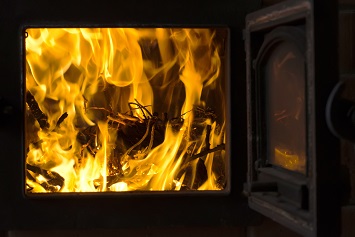Citing sales disruptions caused by the COVID-19 pandemic, the EPA is proposing to revise a Clean Air Act (CAA) compliance deadline for residential wood heating devices. The proposal would provide retailers with an additional 6 months to continue selling Step 1 heaters, or those in compliance with Step 1 of the New Source Performance Standards (NSPS) for these devices, which took effect May 15, 2015. Under that action, retailers were allowed to sell wood heating devices that met the Step 1 emissions standards for 5 years following the rule’s effective date. The NSPS requires that beginning May 15, 2020, retailers could sell only those devices that complied with the more stringent Step 2 emissions standards. The new proposal would allow retailers to continue selling Step 1 wood heating devices until November 30, 2020. The EPA adds that between May 15, 2020, and finalization of the proposal, it will view the sale of Step 1 wood heating devices as a low enforcement priority.

Seymon Malafeev / Shutterstock.com
Products, not facilities
The 2015 NSPS covers four types of devices: wood heaters, pellet heaters/stoves, hydronic heaters, and forced-air furnaces. Under CAA Section 111, the NSPS, which generally establishes a numerical emissions limit, must be based on the best system of emissions reduction (BSER) the Agency identifies for a specific category of emissions sources. The EPA notes that the residential wood heater source category is different from most NSPS source categories in that it regulates mass-produced residential consumer appliance products, not industrial facilities. Thus, important elements in determining the BSER include the costs and environmental impacts on consumers of delaying production while wood heating devices are designed, tested, field-evaluated, and certified, states the EPA.
“In particular, one of the bases for the Step 2 limits and deadline was that 5 years was sufficient time for manufacturers to develop models to meet the more stringent Step 2 standards and for retailers to transition from selling Step 1 units to Step 2 units,” says the Agency. “Providing this 5-year time period was a key aspect of the 2015 rule because, pursuant to CAA 111(a)(1), the stringency of a standard of performance under CAA 111 must reflect ‘the degree of emission limitation achievable’ through the application of the best system of emission reduction. In turn, what is achievable is dependent on how much ‘lead time’ sources have to meet the standard.”
Step 2 requires a 56 percent reduction in particulate matter (PM) emissions from Step 1 for wood heaters and pellet heaters, a roughly 70 percent reduction for hydronic heaters, and an 84 percent reduction for forced-air furnaces.
Regaining lost time
As the Agency now sees it, because of the pandemic, retailers of wood heating devices have been experiencing “very significant losses” of sales beginning around March 15, 2020, due to the temporary closure of stores, stay-at-home orders, and the overall focus on addressing challenges posed by the pandemic. As of the May 15, 2020, publication date of the proposal, the EPA states that about 60 days fell into the lost-time category. Going forward, the benefits of the 5-year lead time will continue to diminish as the pandemic persists in holding the economy in its grip and retailers attempt to rehire laid-off staff and return to normal operation. A return to normalcy will be further impeded by the summer months, a “very low selling season” for wood heating devices, says the Agency.
The proposed new compliance deadline of November 30, 2020, would apply to regulated wood heating devices manufactured or imported on or before May 15, 2020, and certified to meet the 2015 PM emissions limits. Under the NSPS, these devices must still bear a “permanent” label stating that their sale is prohibited after May 15, 2020. Given the proposed deadline extension, the Agency acknowledges the potential for confusion posed by the label. Accordingly, the proposal would allow retailers to inform potential customers with signs, decals, hangtags, or other signage indicating that, notwithstanding the label, the sale of these items is permitted under federal law until November 30, 2020.